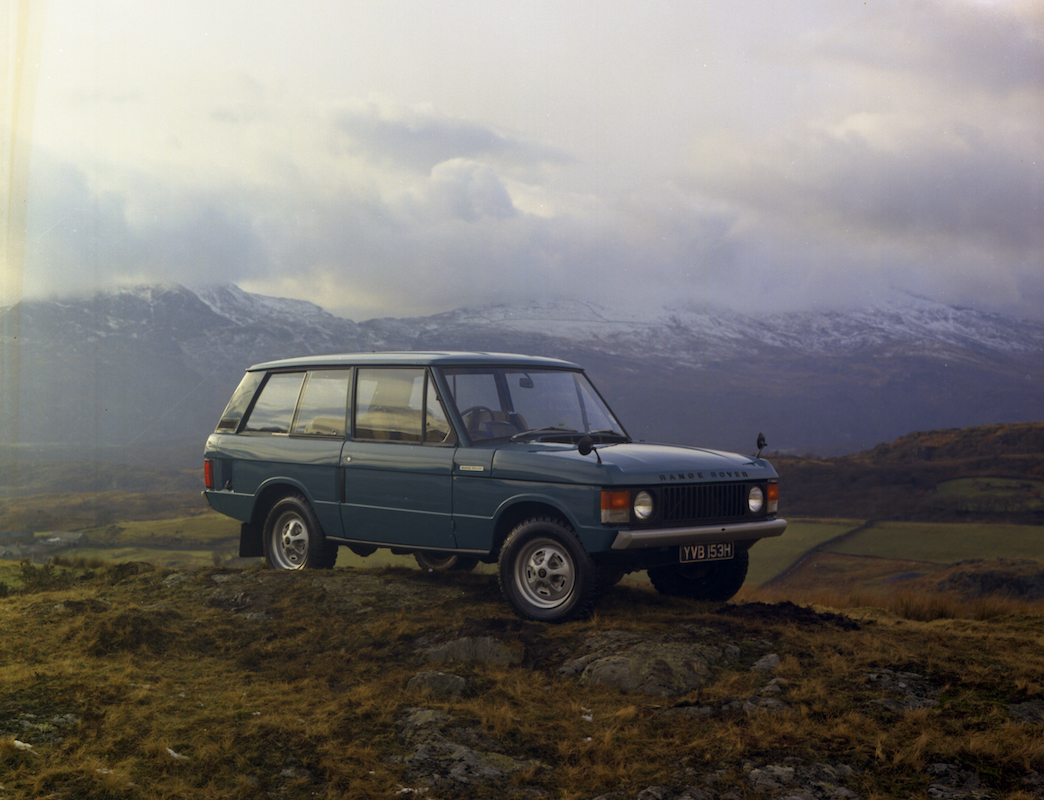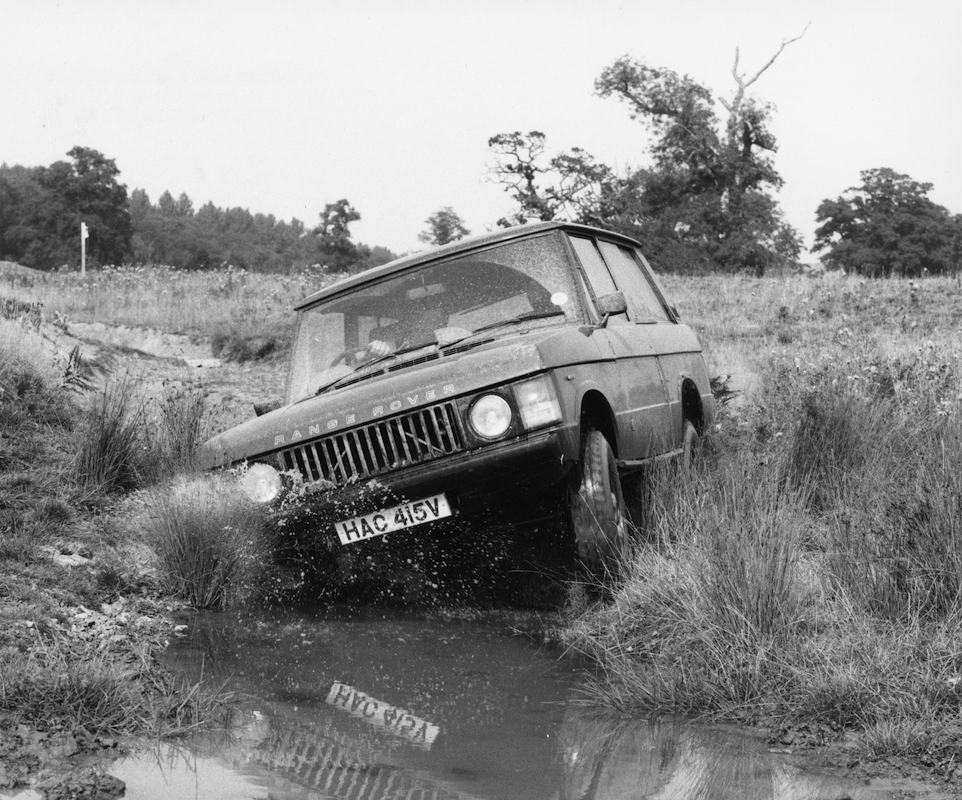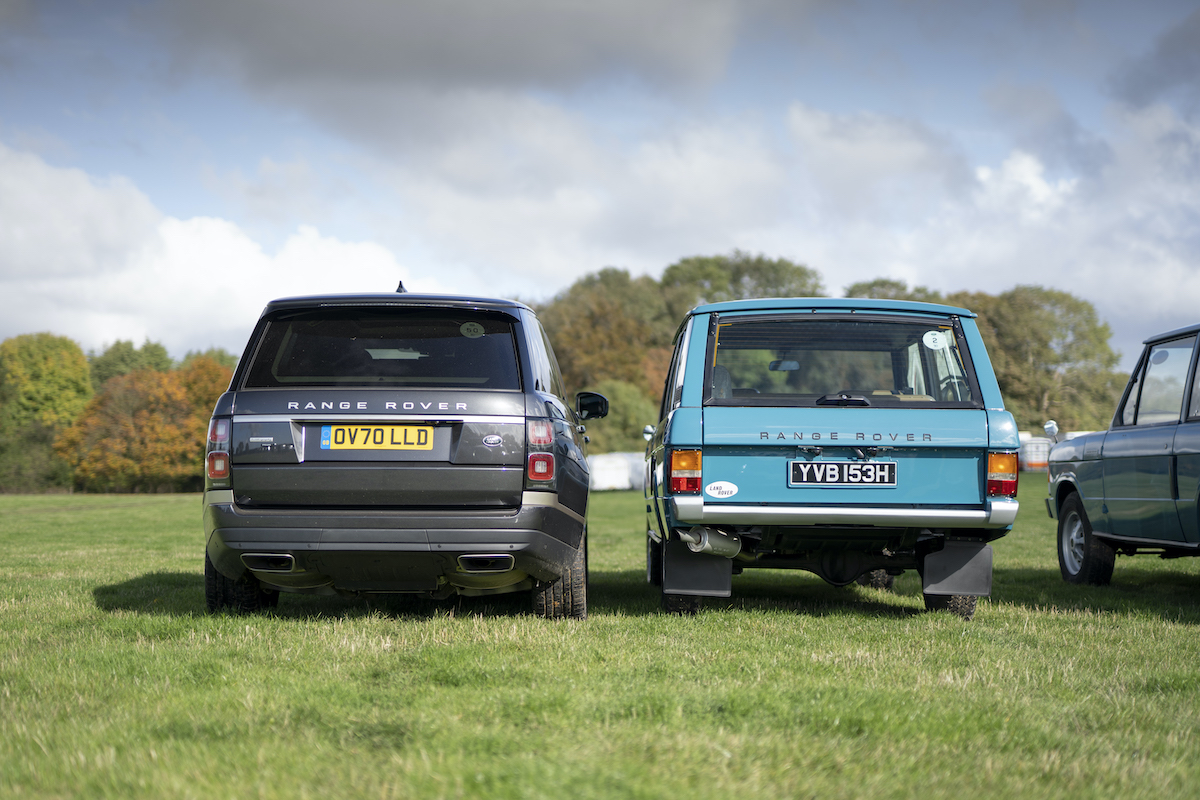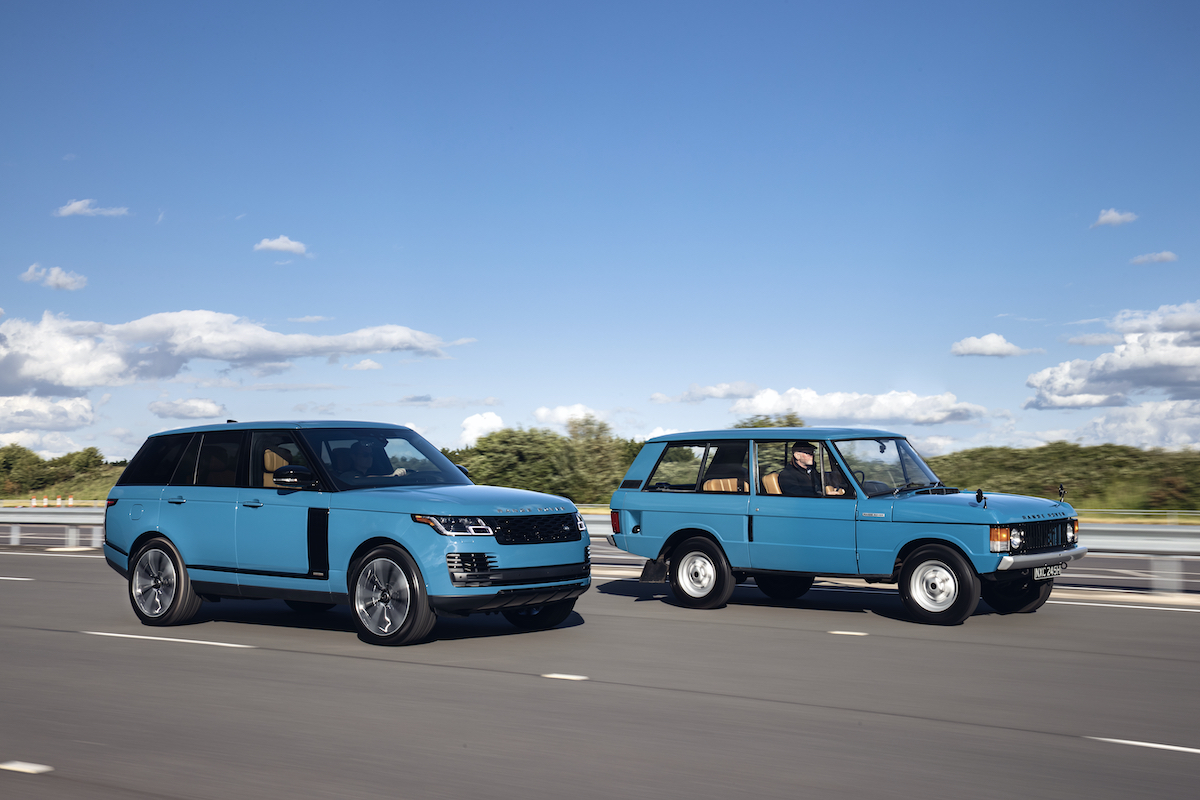This website uses cookies so that we can provide you with the best user experience possible. Cookie information is stored in your browser and performs functions such as recognising you when you return to our website and helping our team to understand which sections of the website you find most interesting and useful.
King of the off-road: a retrospective on 50 years of the Range Rover
By Rory FH Smith | 24 December 2020 | Cars & Yachts, Lifestyle
Celebrating half a century since the creation of the iconic SUV, we head to Goodwood Motor Circuit to attend a very special birthday party

In the 1950s and ’60s, Land Rovers were simple. Created to help tend the land, work hard and go anywhere, the boxy, bug-eyed beast was a familiar and much-loved face the world over. With its army surplus paint job, no-frills functionality and simple mechanics, it was a four-wheeled representation of post- war Britain – tough, plucky and reassuringly straightforward. With sales ticking along nicely for the best part of 20 years, there seldom seemed a reason to spice up the recipe.
But times were changing. With the world starting to shake off the impact of the war and economies regaining strength, a newly minted middle class emerged with hopes, dreams and the means to pay for them. While the trusty, no-fuss Land Rover formula had worked for the best part of two decades, Spencer King – then managing director of the Rover Company – and his design engineer Gordon Bashford sensed something new was needed.
Enter the Velar in 1969. Taken from the Italian word velare – meaning to veil or cover – the word was chosen as the codename for the new, up-market Land Rover project before it hit the road. Although the Midlands-based marque had been toying with the idea of a more sophisticated four-wheel-drive since the early 1950s – developing prototypes under the Road Rover name – it wasn’t until the late 1960s that the recognisable shape started to form.
“It was originally conceived for the American market,” says former Land Rover employee and enthusiast Roger Crathorne, otherwise known as Mr Land Rover. “We were chasing the likes of the Ford Bronco and Jeep Wagoneer, which were doing quite well.” Across the pond, US manufacturers were upping the stakes in a newly established class, one that would become known as the Sports Utility Vehicle or SUV. Blending off-road ability with comfort and refinement, these models were making their mark on the North American market. “We were under a lot of pressure at the time from our managing cirector in the US office, a chap called Bruce McWilliams, who urged us to improve the base Land Rover, which traditionally came equipped with a 2.25-litre petrol engine.”

McWilliams had spotted an opportunity for a more developed and refined take on the rough and ready Land Rover. “He converted a short- wheel base Land Rover to house a V8 engine, added some flashy paintwork and chrome and presented it to us,” says Crathorne.
While it was far from what the Range Rover would eventually become, the idea struck a chord with Spencer King and, in 1967, the first prototype rolled out. By 1969, the car was all but finished. Still bearing the Velar badge, all that was needed was a marketable name for the new machine.
“During the design process, there were a lot of names put forward for production. We were asked if we could improve on the list and Range Rover just fell into place so nicely,” says Crathorne. With everything in place, the Range Rover was unveiled to press in Cornwall on 17 June. Unbeknown to King and Bashford, they had created one of the most iconic cars in motoring history.

POWER AND COMFORT
Roll on half a century from that moment and I find myself in the original Range Rover’s great- grandson, enjoying an in-seat massage on a crisp autumn day. Neatly arranged ahead of me sit 50 Range Rovers spanning five decades, lined up in front of the gates to the Goodwood race circuit. Celebrating the range’s birthday in true style, all 50 cars are embarking on a lap of the famed motor circuit in a chronological convoy.
Of course, I’m dead last in my car of choice – the Range Rover Fifty. A special edition created to celebrate the automotive icon’s half-century. Up in front, there’s everything from world-record- holding one-offs and an armour-plated car, to a stretch limousine and a six-wheeled off-roading beast.EventheQueen’sformerRangeRoverhas come along, finished in a stately shade of green.
With plenty of time to take in my immediate surroundings, I can see clearly that the Range Rover has moved on a fair bit over the decades. Originally designed to be hosed down inside and out, the first iteration had a plastic dashboard, velour seats and rubber floor mats. It was exactly what King had intended it to be back in the 1960s – a slightly more luxurious version of the Land Rover. Now, far from a wash-down interior, my car features a five-litre supercharged V8 engine, 22in rims, a plush leather interior, two 10in touchscreens, massage seats, ambient lighting, air purification and a 1,700w 29-speaker Meridian stereo. While the first Range Rover provided simple pleasures including a heater and radio, the latest iteration offers up Bentley levels of comfort, Rolls-Royce ride quality and true limousine luxury in the back. But all that comes at a cost.

Limited to 1970 examples (no prizes for guessing where that number came from), the Range Rover Fifty starts from £109,000 and quickly rises with a few options ticked. “When you think the first ones were just under £2,000 – it’s changed quite a bit,” says Philip Bashall, owner of the Dunsfold Collection, the largest collection of Land Rovers in the world. “In the old days you could hose it out and use it on the farm in the day but then go to the opera in it come the evening… it’s the definition of luxury and elegance.”
Since the debut of the very first model in 1970, the Range Rover has proved a runaway success, thanks in part to the car’s epic adventures and notable achievements. One year after its launch, the Range Rover managed to work its way into the Louvre Museum in Paris, as a leading example of industrial design. The following year, a crack team of soldiers drove two of them from Anchorage, Alaska to Tierra del Fuego, Argentina – crossing the notoriously impassable Darien Gap in Colombia en route. Since then, it’s made its way across the Sahara desert, won the London to Sydney Marathon, topped 27 speed records in its diesel guise and won the Paris- Dakar rally – twice.
But it’s not all about publicity stunts. Still proudly sporting its signature clamshell bonnet, floating roof, split tailgate and trademark front fender vents, it easy to see how the Range Rover has become an icon both in and outside of the automotive world. What started life as a niche venture into a new and emerging car class held its ground over 50 years to become a sought- after social statement. While its price tag and status might have risen in the past five decades, the Range Rover rightfully retains its place in motoring history – as the undisputed king of the off-road.







